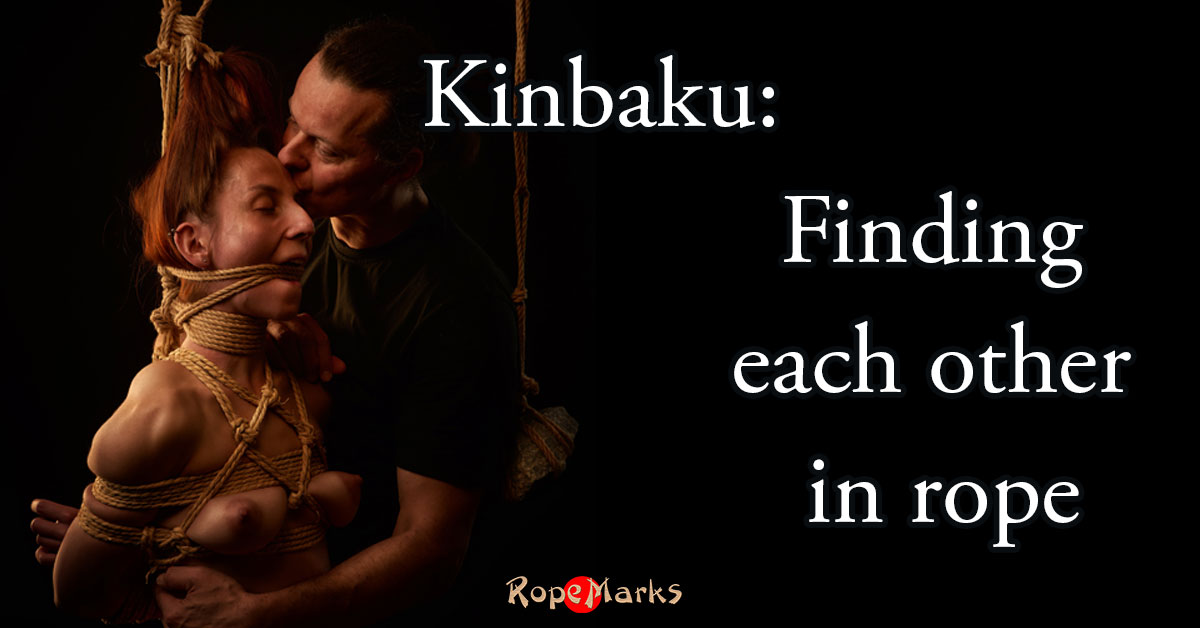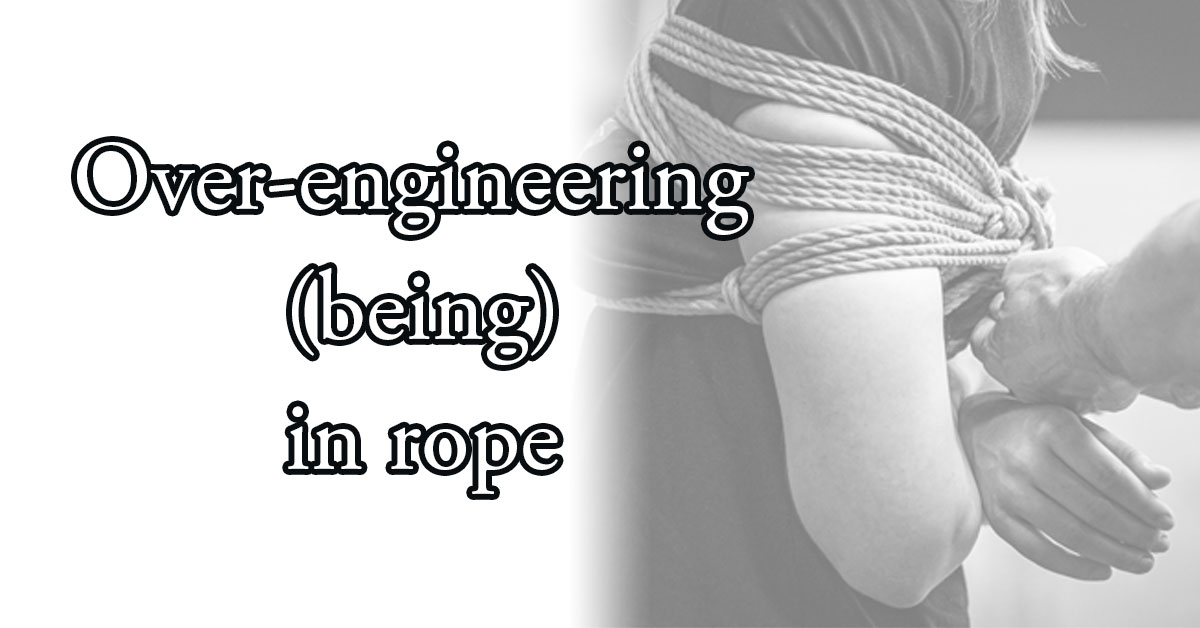There is a lot that can be said about safety. The most important probably is; be safe, sane and consensual. Take all normal precautions as you would in any other form of BDSM-play and crank that safety up a notch or two. Don’t think about doing any of the advanced stuff without fully and properly understanding the basics. With an inexperienced partner a simple hands on the back bondage could be much more effective than a full body suspension.
The rigger will have to (learn to) pay close attention to signals of discomfort or (bad) pain and act accordingly. At any time the rigger should have a watchful eye over his or her partner. The person in rope will have to learn what it means to be in bondage and should speak up (any possible way) when the bondage starts to feel painful in a wrong/bad manner. Just because you are on the receiving end of the rope does not mean you can’t complain, you can and should whenever necessary.
Whenever discomfort and/or pain form part of the session it is necessary for the inexperienced rigger and partner to talk about the effects planned for the coming session.
A lot of people seem to underestimate bondage. Personally we think bondage is the most dangerous form of BDSM. One of the reasons for this is with bondage the submissive is bound in a way that the only option to get free is with the help of someone else. In the event that something should happen to the rigger the person in rope will have no option of freeing her or himself. In such a case it is very important that the bondage is applied in a way that it will not cut circulation or push nerves. Should your partner be in a suspension the situation can be called life threatening.
Japanese bondage as we know it was originally used as a method of torture. The torture aspects of then are incorporated in the Japanese bondage of today as i.e. erotic stimulation. Still, given enough time erotic stimulation can become painful (there is something like too much of a good thing) and the ancient use of bondage is back in business.
Another point of concern with bondage is the continues pressing of rope or knots on the body or limbs as compared to for instance a swift short blow with a whip. Continues pressure on a specific spot can block the flow of blood and crush nerves. If a situation like this sustains over a longer period of time permanent damage to the body can occur.
A third reason that makes bondage more dangerous than it needs to be is the lack of information about it. Most information does not go beyond mere basics. When you do find information that goes beyond basics it’s my experience the information is not confirmed by the source but copied from resources elsewhere. From a safety point of view I will not publish information that we have not successfully tried and tested our self.
- Some safety points to consider:
A difficult position can exacerbate a weak joint like a shoulder or knee and result in increased injury. Most likely this would only happen to someone who was already at risk. - Long term bondage, like many hours in a mummification where a model is in a single unmoving position for a long time, could predispose to blood clots akin to sitting in a coach seat on an airplane for a long flight.
- There is the risk of posturalhypotension (passing out) when tied upright. If that is not rectified immediately there could be serious damage.
- Aspiration with gags, but that is pretty unlikely.
- Never leave your bound bottom unattended!
to be continued…












Leave A Comment